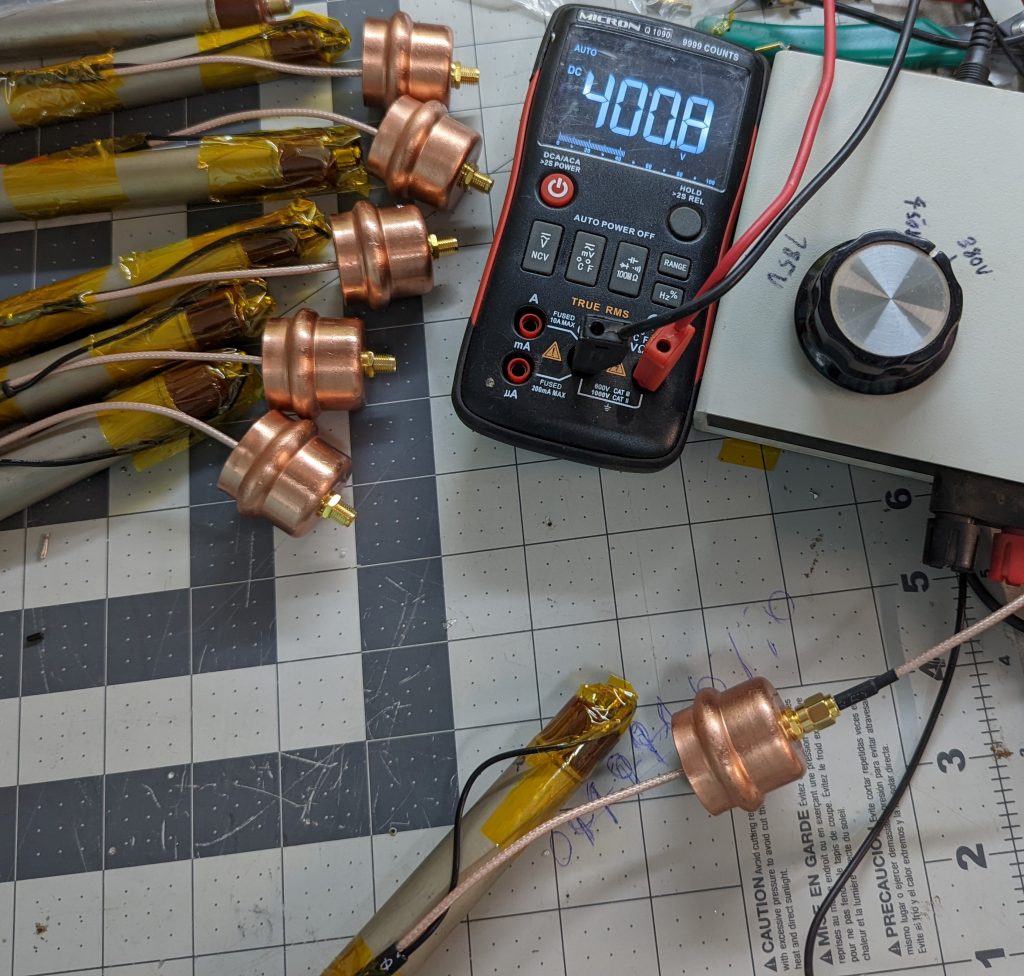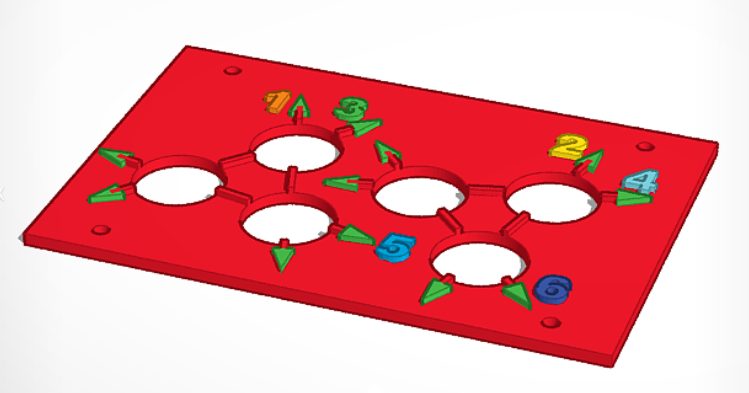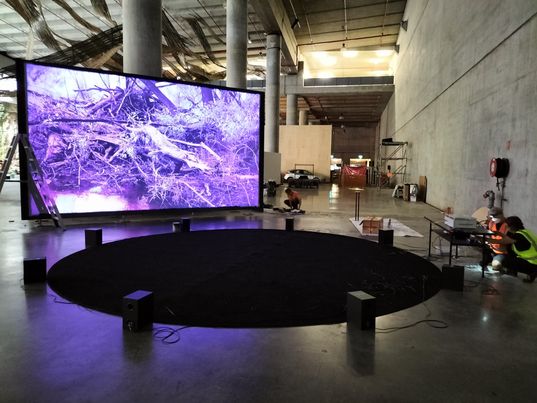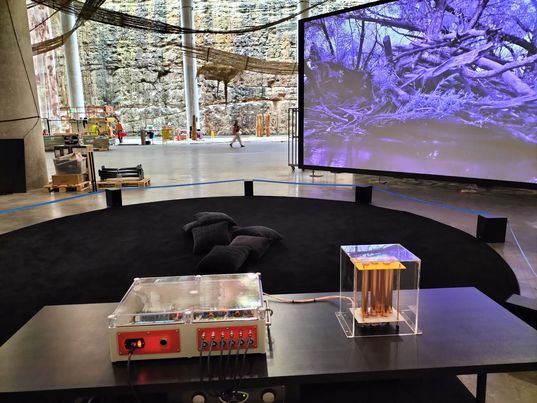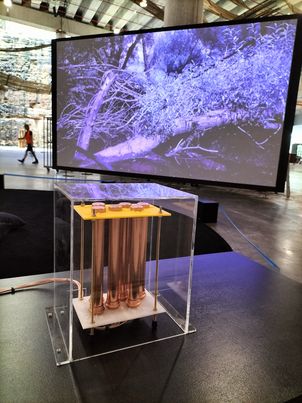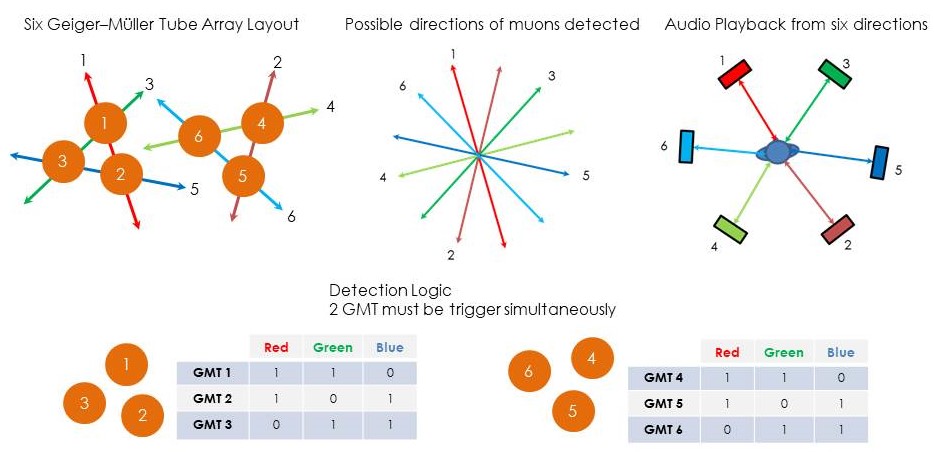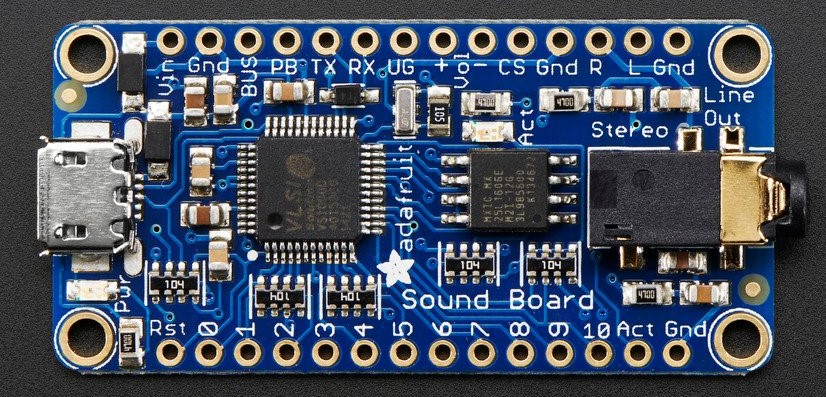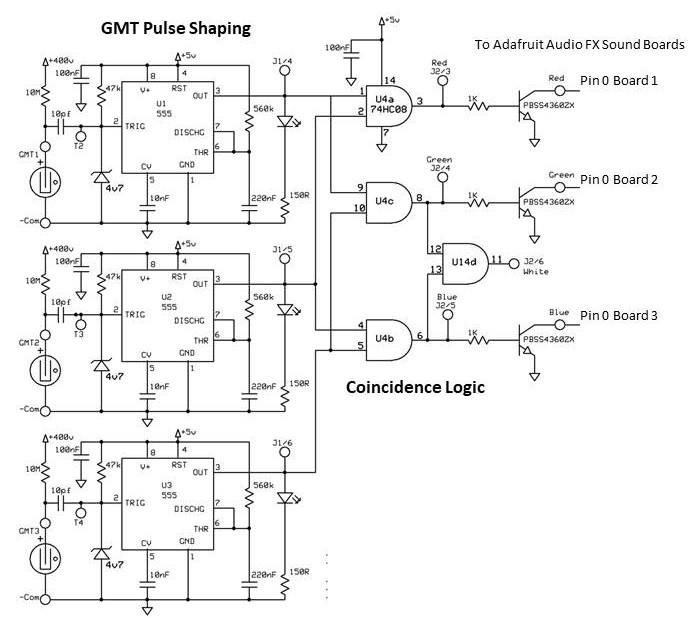HAINES & HINTERDING, BIENNALE OF SYDNEY RIVUS 2022
This project was commissioned for the artists Haines and Hinterding as part of their exhibition in the Biennale of Sydney Rivus 2022

This detector project uses two Cosmic Array Detectors that I had designed for a light and sound installation for the 2017 Splash Adelaide festival. However, in this design, I am creating a 3 + 3 channel system to provide six channels of polyphonic sound. So that when a Moun travels through the installation in any of the six different directions surrounding the observer, a sound will be played on a corresponding speaker.
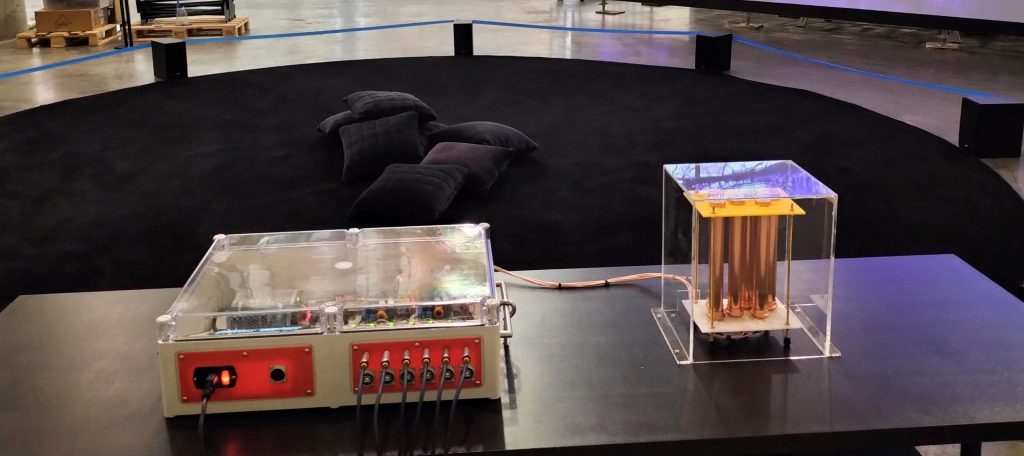
Muons created by cosmic rays are very fast-moving 0.998c (c = speed of light) and weakly interact with matter. So it can pass through large amounts of material without being stopped, through buildings, mountains, and deep into the ground. However, it is not sufficient to pass through the entire planet.
Accordingly, the mouns detected arrive from the sky at any altitude and in any direction on the horizon. Also as muons travel very fast, it is not practical to measure their time-of-flight between Geiger–Müller tubes (GMT) and so we can only indicate in which axis within two possible opposite directions in 360 degrees around the installation.
Consequently, I have chosen the geometry of the 3+3 channel detectors to best approximate six-axis with as much channel separation to allow the observer to have the best experience of how cosmic rays are all around them and arrive from random directions and intervals.
The electronics were laid out inside a large box with a transparent lid to allow visitors to the exhibition to see how this detector is built the raw detections from each GMT, the logic, and the process of triggering each sound. It also includes a screen to display the number of detections from each axis and a grand total. This runs on a Raspberry Pi 4 using Raspbian, Node-Red, and Python which was developed and completed by Paul Schulz.
Sounds are stored and played back via six Adafruit Audio FX Sound Boards which on their own can trigger up to 10 monophonic sound files, has 2MB of storage, and can play either in the WAV or OGG sound file format. However, in this case, we are triggering one sound file per board, as this provides extra storage for high-quality sound files and more importantly allows any of the six sound channels to be triggered quickly and polyphonically. In the original Cosmic Array design, sounds played were monophonic as it could only trigger one sound at a time.
Pin 0 is connected to the detector output BJT drivers pulling Pin 0 to ground (low) and triggering the file T00.ogg to be played.
To upload files the equipment must be turned off and a USB B cable used to connect to a computer where it mounts as a USB storage. The audio file to be played when triggered should be named T00 and copied onto the storage. Be sure to unmount correctly instructions here https://learn.adafruit.com/adafruit-audio-fx-sound-board/triggering-audio
Another change in this design was to use larger Geiger–Müller tubes (GMT) SI-22G the same tubes used successfully in my Pixel Hodoscope project. This significantly increases the detector’s aperture and the count rate for triggering 6 channels of sound. Each GMT is enclosed inside copper tubing, connected with high-quality Teflon coaxial cables, and insulated internally using Kapton tape to reduce false triggering from background radiation or RFI.
Geiger-Müller Tube (GMT) SI-22G
Gamma Sensitive
Working Voltage – 360-440V – Recommended 400V
Inherent counter background (cps) – 1.16 Pulses/sec
Plateau Inclination – 0.125%/V
Plateau Length – 100V
Range of working temperature: -40: +50 c
Load Resistance – 9-13 MOhms
Length – 220 mm
Diameter – 19 mm
